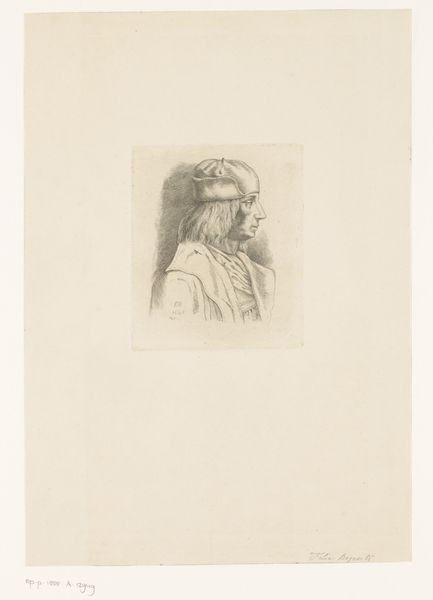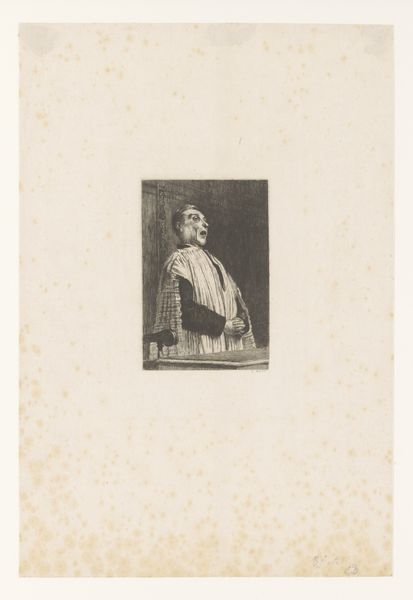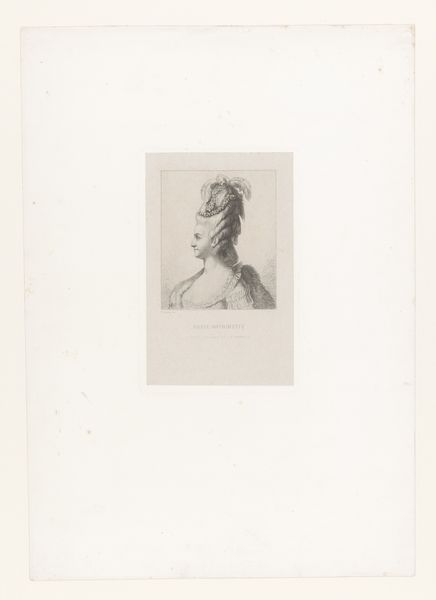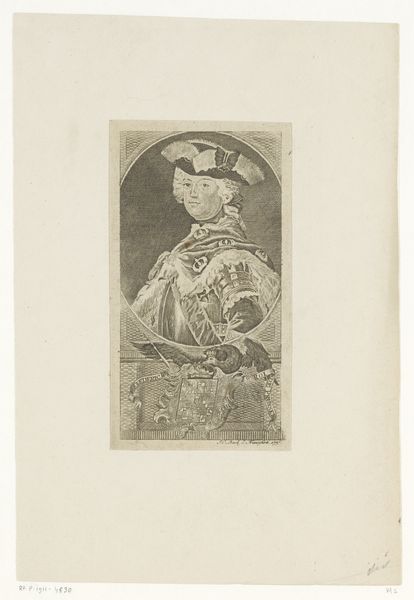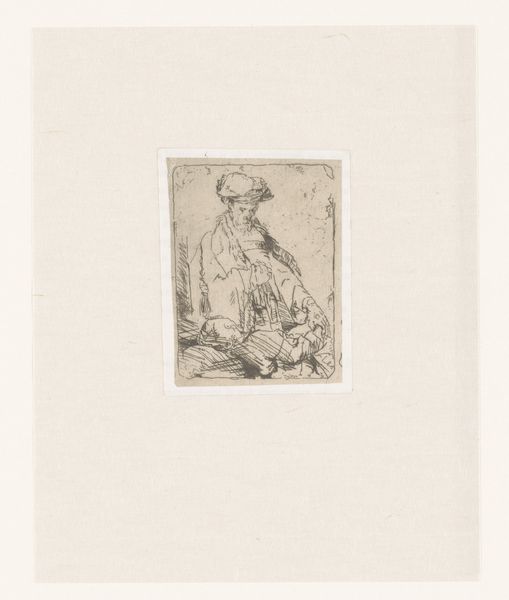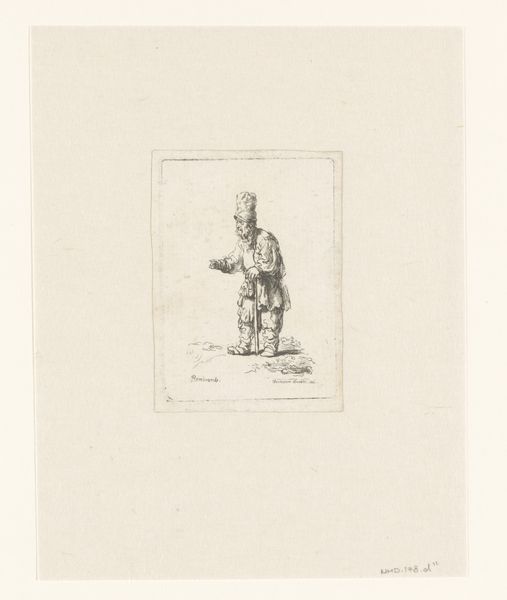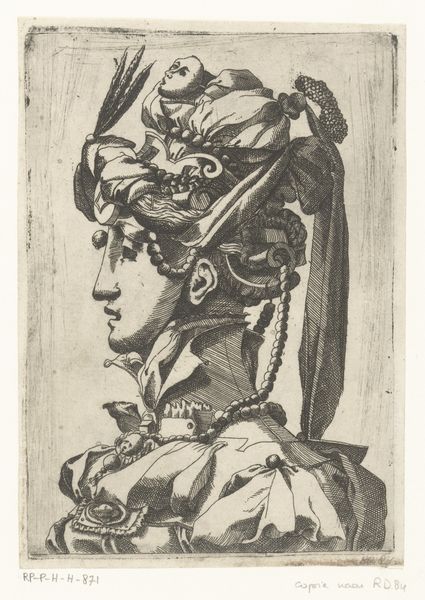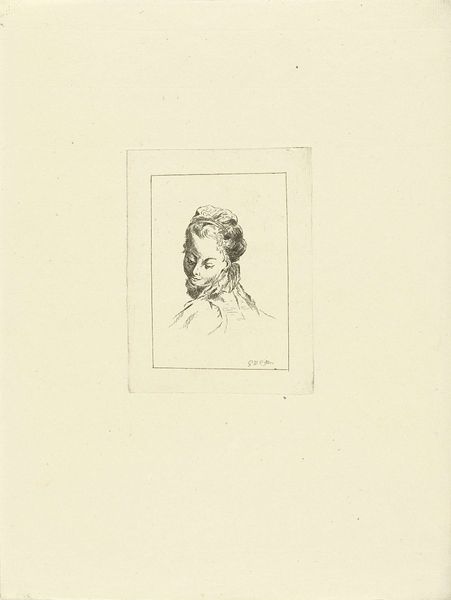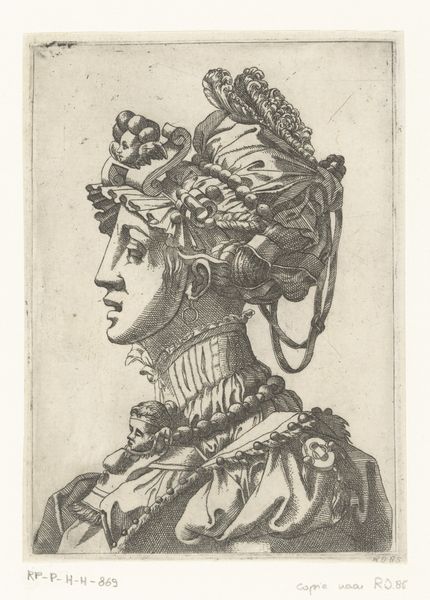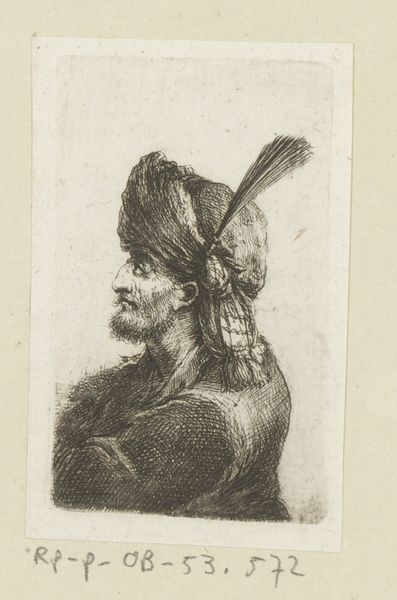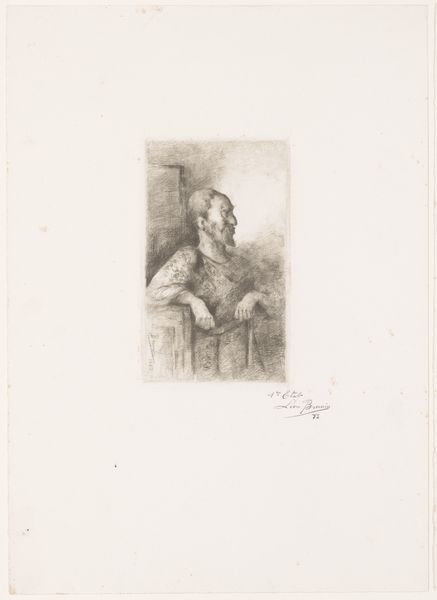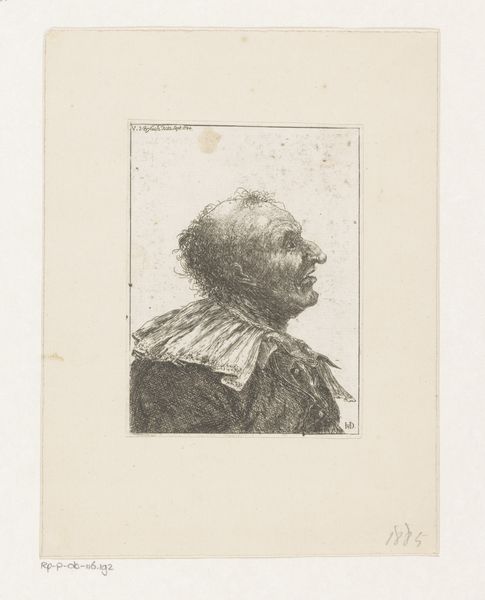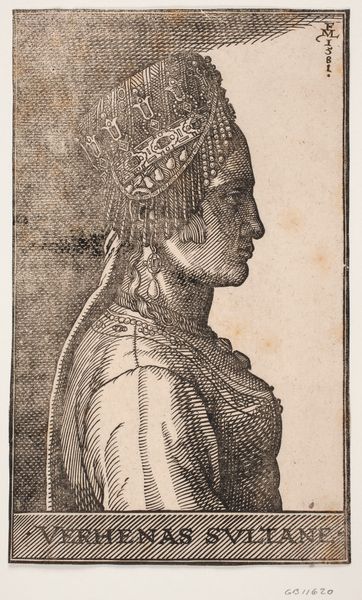
print, engraving
#
portrait
# print
#
figuration
#
11_renaissance
#
line
#
history-painting
#
northern-renaissance
#
engraving
Dimensions: height 116 mm, width 97 mm
Copyright: Rijks Museum: Open Domain
Curator: Let's examine this 16th-century portrait, "Portret van Jacques de Lévis", a print dating to around 1578. Editor: Right, a face peering from the past. Intensely focused, yet…confined by those etched lines. Gives me the feeling of secrets whispered but never fully revealed. Curator: Indeed. The engraving medium lends itself to such precision. Consider the socioeconomic implications of portraiture during the late Renaissance. This wasn’t mere decoration. It signaled status. Editor: Status clearly intended, check the finery! But doesn’t the severity of the medium itself hint at a kind of austerity? He almost seems trapped by his wealth and the weight of expectation. Is that the line of the artist's burin, or the constraint of a gilded cage? Curator: An intriguing thought. However, the choice of engraving, practically suited the dissemination of the image. Prints offered access to a wider, albeit still privileged, audience. The materiality allows the artwork to become part of the distribution system. Editor: I get it—reproducible image equals broader impact. And yet, it still feels deeply personal to me. All of these tiny strokes adding up to one expression, trapped on a square. A kind of time capsule… melancholy and compelling. Curator: So, by focusing on production methods, we can look past our individual emotions towards social structures. Jacques de Lévis becomes more than a singular man, becoming representative of a class, a status, even an economic structure. Editor: I’ll meet you halfway. I find both the historical positioning and emotional expression equally crucial. Let's not forget the hand that guided the burin. Even reproducible art has a touch of singularity and intimate feeling embedded into the medium. It can echo the hand and time as a whole. Curator: A fair point. This analysis reminds us that art objects serve multiple functions. Editor: Yes. Historical artifacts and portals, echoing voices, if we pause and allow them to whisper.
Comments
No comments
Be the first to comment and join the conversation on the ultimate creative platform.
